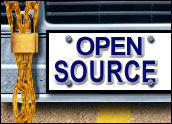
Renowned computer scientist Andrew “Andy” Tanenbaum said he doesn’t believe the conclusions of a draft report on the origins and legality of open-source software, particularly the allegation that Linus Torvalds didn’t write Linux, as is commonly believed, but copied much of it from Minix, a Unix-like operating system that Tanenbaum wrote.
Tanenbaum — who is closely associated with many operating-system luminaries — vehemently disputes author Kenneth Brown’s allegation that Linus couldn’t possibly be the writer of the original Linux kernel.
“He says Linus couldn’t possibly have written that much code,” said Tanenbaum. “But there’s tremendous variation from programmer to programmer — some research I saw says maybe as high as 30 to 1 for great programmers and poor ones — and Linus could easily be in the top 10 percent or top 1 percent of all programmers. I wrote [an operating system] in three years, but I only worked on it part-time. I had a job and kids and maybe only put in 15 hours a week. Linus was a student. Saying he couldn’t have done it is just plain wrong.”
The Kenneth Brown report, which will be published by the Alexis de Tocqueville Institute, is “riddled with errors,” both of fact and methodology, said Tanenbaum. “He can’t even handle arithmetic with positive integers. And he didn’t even interview Linus. Wouldn’t you think that if you were going to accuse someone of something like this, you would at least talk to him first?”
Tanenbaum Criticizes Techniques
Furthermore, Tanenbaum said that when Brown talked to him in Amsterdam, Brown neither recorded nor took notes during the interview, which Tanenbaum said lasted “well over an hour.” Then, Tanenbaum said, Brown started buttonholing “random graduate students in the halls of the university, asking them what they knew about Unix…. Most of them hadn’t been born yet.”
At one point, Tanenbaum writes on his Web site, Brown was clearly so ignorant of both popular computer history and technical-legal distinctions that he was “still thinking he might be a spy from SCO, but if he was, SCO was not getting its money’s worth.”
Brown’s allegation is part of a 91-page draft of a report titled “Samizdat: And Other Issues Regarding the ‘Source’ of Open Source Code.” The “samizdat” reference in the title derives from a slang term for papers and books that contain programming techniques and code, sometimes from sources whose owners have not explicitly agreed to be published, that are often passed and copied from programmer to programmer.
Brown’s Allegations
In the report, Brown alleges that a course reader developed by John Lions — then a professor at the University of New South Wales in Australia — was an illegal copy that was so widely disseminated that many of the free-source luminaries must have seen it and used its code and techniques, thereby forever tainting the current open-source and free-source communities.
His argument is that the IP lineage from Unix to Minix, then from Minix to Linux — through Torvalds, whom he alleges took so much from Minix that he will never be able to establish clear title or inventorship — makes Linux eternally vulnerable to ownership challenges and therefore unsuitable as a base for developing new code.
In particular, the report implies that Linus Torvalds did not create Linux from “whole cloth,” but rather used Minix code that he perhaps later took out. And while the report itself is careful in its phrasing, Brown was adamant in a personal interview with LinuxInsider that Linus did not create or “invent” Linux in the normal sense of the word.
When challenged as to his proof, Brown fired back with a challenge to name anyone else who has written an operating system from scratch without having seen any of the earlier Unix code or code bases derived from it. “Name just one,” he challenged LinuxInsider and open-source advocates.
Tanenbaum Responds
Tanenbaum responds on his Web page that he knows of at least five people who have done it, namely himself (Minix), Ken Thompson (Unics for the PDP-7, in pre-Ritchie days), Rick Holt (Tunis), Doug Comer (Xinu) and Mark Williams (Coherent). “And,” he told LinuxInsider, “Linus knew it could be done, and that makes a big difference, when you know someone has already done it.”
But despite Brown’s interpretation of the history of Unix and Linux as a bundle of twisted roots from academia, industry and government, and his argument that Linux has been forever tainted by legally questionable origins, Brown calls for a new federal program to develop more open-source code in cooperation with industry.
“Imagine what we could do if the government supported programming competitions, where kids could compete by writing open-source code?”
Report’s Conclusions
The report says government should:
- “Work vigorously to create a true ‘free source’ code capability program at universities and colleges. This program should go to promote true open source projects, not hybrid source projects like the GPL and Linus. The federal government should support a $5 billion budget over ten years to produce a free source code project in partnership with the IT industry and other governments interested in promoting increased computers [sic] science research and development. This effort would be a benefit to academia, the private sector, and the IT economy.”
- “Actively study the taxpayer return on investment (TORI0) [sic] from government funded governmental research and development at colleges and universities.”
- “Increase the US Patent and Trademark Office budget to property [sic] support the anticipated growth in intellectual property filings by the public as a result of the ‘open source’ program at colleges and universities.”
- “Increase financial incentives for corporations to participate in an open source program at colleges and universities.”
The report, originally scheduled for publication on May 21st, is now expected May 24th.
The Alexis de Tocqueville Institute has been criticized for accepting money from Microsoft. It also has supplied research reports disputing scientific findings that secondhand smoke is harmful and has supplied research to advocates of school choice.


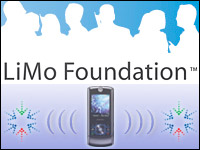

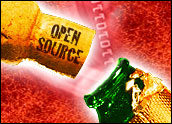

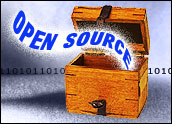


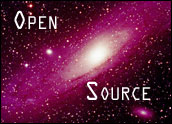
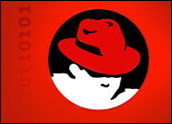











































Finally a somewhat fair-minded report about slander that Microsoft perpetuates.
After all the CRAP that Enderle puts out, I am so happy that there is balance here.
Although Enderle has no place as a journalist, accepting money to "study" photoworks, as noted in COLA by chris H:
‘However, recently, as part of a project designed to pick
the best online photo-publishing sites — Photoworks won,
by the way –…’
Interestingly, if you go to Photowork’s website they trumpet how they have been found to be the best in a study by the Enderle Group, you can even download a copy of the study:
http://www.photoworks.com/Info/EnderleReport/EnderleReport.pdf
At the end is a disclaimer:
This study was funded by PhotoWorks, but represents the
objective view of the Enderle Group.
You certainly get your money’s worth with Rob, I’ll say that. Not only will he ‘objectively’ find in favour of your company when you pay him, he’ll then mention you at the drop of a hat in completely unrelated news articles – what a guy, Robert Enderle – Man of Integrity!
Hello Lisa,
1) Your explanation about the "samizdat" term seems wrong, at least. "samizdat" refers to russian words (self-publish), please see :
http://www.slis.ualberta.ca/issues/sbalazs/history.htm
But it is, in some way, related to John Lions’ book, here’s a quote from Jargon File (Public Domain):
"
Lions Book /n./
"Source Code and Commentary on Unix level 6", by John Lions. The two parts of this book contained (1) the entire source listing of the Unix Version 6 kernel, and (2) a commentary on the source discussing the algorithms. These were circulated internally at the University of New South Wales beginning 1976–77, and were, for years after, the only detailed kernel documentation available to anyone outside Bell Labs. Because Western Electric wished to maintain trade secret status on the kernel, the Lions Book was only supposed to be distributed to affiliates of source licensees. In spite of this, it soon spread by samizdat to a good many of the early Unix hackers.
[1996 update: The Lions book lives again! It will finally see legal public print as ISBN 1-57398-013-7 from Peer-To-Peer Communications, with a forward by Dennis Ritchie.]
"
Full file :
http://www.outpost9.com/reference/jargon/jargon_toc.html
More informations about John Lions:
http://www.salon.com/tech/feature/1999/11/30/lions/
So "samizdat" can be interpreted as : publication without official autorization, and closely related to freedom of speech… but maybe Soljenitsyne is a yet to be known high skilled programmer…
Googling can helps, it’s free…
2) Off Topic :
BTW your (LinuxInsider) registration validation using plaintext login/password in URL is.. Hum…
…Oh… I mean… wrong …:
http://www.linuxinsider.com/perl/mboard_registration.pl?auth_code=xxxxxxx&username=Hum&passwd=xxx
Please assign temporary passwords, use only an hashcode or a form based validation.
Many users never change their password…
Fabrice.
" In the report, Brown alleges that a course reader developed by John Lions — then a professor at the University of New South Wales in Australia — was an illegal copy that was so widely disseminated that many of the free-source luminaries must have seen it and used its code and techniques, thereby forever tainting the current open-source and free-source communities. "
.
Um, wouldn’t the same problem exist for Windows "luminaries", MacOS, AmigaOS, etc? If people were "tainted", why does he assume just OSS coders were and not Microsoft coders, or Apple coders?
.
This is all very amusing.